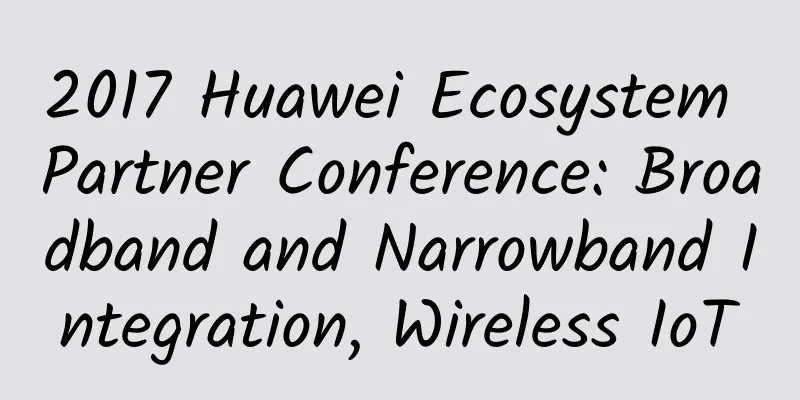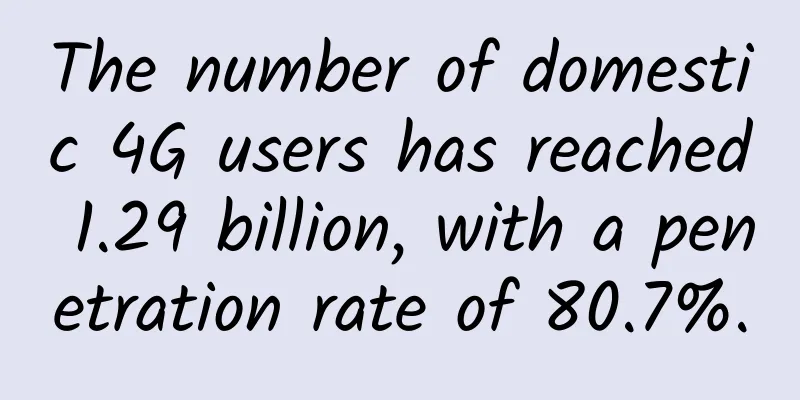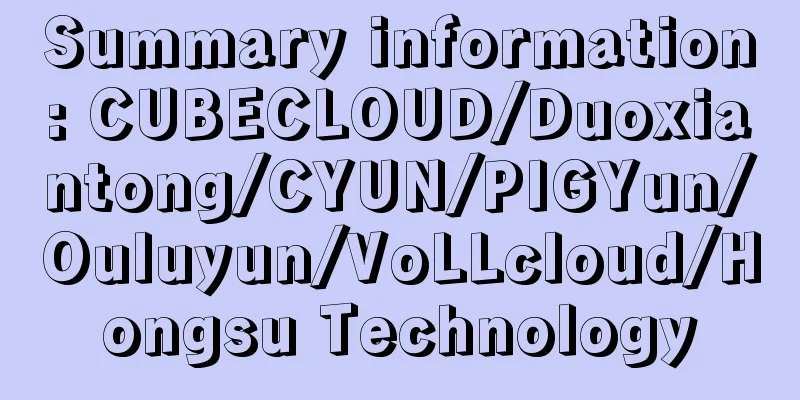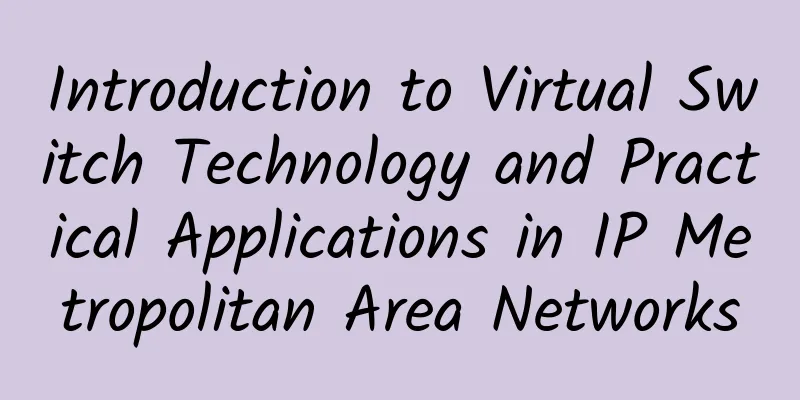2017 Huawei Ecosystem Partner Conference: Broadband and Narrowband Integration, Wireless IoT

|
[51CTO.com original article] The Internet of Things is a hot topic at the moment. It is everywhere, yet seems out of reach. At the ΣCO-Partner Huawei Ecosystem Partner Conference held at the Changsha International Convention and Exhibition Center from March 9 to March 10, the sub-forum with the theme of "Broadband and Narrowband Integration, Wireless Internet of Things - eLTE Wireless Full Connection, New Upgrade of the Internet of Things Industry" focused on standards, solutions, operations, and actual construction, and launched a discussion on application scenarios that can be implemented and operated. Huawei and the participants looked forward to business opportunities and discussed business together! Speech: Wireless has accelerated the industry's digitalization wave and has brought its booming development to a breaking point
Peng Jianhua, President of Huawei Enterprise Wireless Product Line Mr. Peng Jianhua, President of Huawei Enterprise Wireless Product Line, said in his speech that in terms of sales market technology innovation, 5G is the most talked about topic in the industry today. However, in the public security, smart city, transportation, and power industries, cloud, big data, and artificial intelligence are the most talked about topics. So who will provide connectivity in the era of digital transformation? Who will support the diverse and abundant connectivity technologies in the future? Without a doubt, it is wireless. Wireless is very important. Therefore, Peng Jianhua believes: "In the digital revolution of the entire industry, wireless has accelerated the digital wave of the entire industry and has reached a breaking point of vigorous development. This is a good opportunity. We hope that everyone will work together to seize the opportunities of the entire industry and accelerate the digital revolution of the entire industry. Huawei and its ecosystem partners are ready in terms of manpower, broadband digital clusters, and the difficulties that wireless has faced in the past, spectrum issues, and standards. Today, what we need most is Huawei's ecosystem partners to achieve win-win results in industrial development from customers to channels to products to the entire chain. At the same time, let the digital revolution of the industry market enter a new stage of development, let our industry enter a new world, and bring new changes to the entire human production, industry production, and human life." New product launch: Huawei eLTE broadband and narrowband integrated wireless IoT solution
Zhao Xing, Director of China Wireless Solutions Sales Department, Huawei Enterprise Business The future is a world where everything is connected. So what big moves will Huawei make in the IoT industry market? At the forum, Huawei officially released the eLTE broadband and narrowband integrated wireless IoT solution. Mr. Zhao Xing, director of the enterprise's China Wireless Solutions Sales Department, gave an in-depth analysis of the solution. When it comes to the Internet of Things, we often hear about IoT and operators, such as meter reading, environmental monitoring points, etc. In fact, there is also a part called broadband IoT. The Internet of Things is mainly about connecting things, which is different from the communication between people. As long as there are things, there will be demand for broadband and narrowband. Zhao Xing said: "Narrowband emphasizes more connections, while broadband emphasizes stable data access. Broadband is easier to integrate into a certain application than narrowband IoT, and broadband does not have too high requirements for coverage, and can transmit large amounts of content. Whether narrow or wide, the requirements for latency are very high, some require 100 milliseconds, and some require 500 milliseconds. Another factor is the number of connections. For narrowband, we hope to reach 5,000 or even 10,000. Of course, it also depends on the business model. A station may have tens of thousands of points, or it may have a thousand points or several thousand points in one square kilometer." The product design concept of Huawei's eLTE broadband-narrowband integrated wireless IoT solution is to be participatory, affordable, and scalable, and open spectrum is provided for flexible configuration. Among them, Huawei's 5.8G eLTE-U can provide users with high-quality and highly reliable network access. It can be used wherever wifi can be used, and 80% of the places where wifi cannot be used can also be used with this. Specifically, there is no industry restriction and it can be used by all walks of life, solving the problem of stable broadband access within 1 kilometer. Technology Outlook: Outlook of Enterprise IoT Technology Based on Unlicensed Spectrum LTE
Fan Mingxi, Vice Chairman of MulteFire Alliance What is MulteFire technology? We can think of it as an advanced wifi technology based on LTE. It can still be deployed using wifi, but its technical architecture is in the unlicensed frequency band. The advantage is that it allows owners or system integrators in private networks to bring the performance of LTE and wifi to private networks. Why choose to bring LTE technology to the unlicensed spectrum? LTE technology is based on a large standard organization in the industry, which is established by hundreds of manufacturers. There is a very strict series of product assurance and testing processes behind it, so the products produced are quite reliable. In the end, everyone can get a high-quality LTE product with coverage and connectivity features. "The reason why we want to bring LTE technology to the unlicensed spectrum is not to compete with WiFi, but to improve the wireless efficiency of the unlicensed spectrum and make related applications in the unlicensed spectrum get more service quality and guarantee. Now this technology has matured from a commercial perspective." Fan Mingxi said, "From the business model point of view, the business model of MulteFire LAN is very flexible and allows the existence of a variety of business models. We can make private network providers provide network services to commercial areas. The infrastructure cost is regional measurement and network design, network equipment hardware and software, installation, construction, and manpower. Potential customers include real estate developers, merchants in the LAN, service providers, etc. From the current MulteFire From the perspective of some industrial parks, the MulteFire Alliance currently has more than 20 corporate members, including Huawei, Nokia, Ericsson, Cisco, Qualcomm, and Telecommunication Terminal Laboratory, which form a complete industrial chain. The purpose of MulteFire is to bring real innovation to the entire vertical operation industry and innovative business of enterprises. We hope to provide enterprises with a high-quality coverage, large coverage, seamless switching, high reliability, and security. In addition, by comparing the coverage of MulteFire technology and wifi, the results show that the coverage distance is about three times that of wifi. Although wifi is also being upgraded, MulteFire still has about twice the coverage distance of the upgraded wifi. " According to Fan Mingxi, the current 1.0 product of the MulteFire Alliance is aimed at broadband, such as the high-speed control of the Internet of Things such as unmanned vehicles, and the 1.1 version will add more narrowband corresponding technologies. We are very excited because MulteFire's technology can finally begin to face commercial use. We hope that this technology can bring new business opportunities to our industry and all partners, so that everyone can form a win-win model in the new Internet of Things and Industry 4.0 stage. Success story: Tianjin Electric Power Wireless Private Network Construction and Application Sharing
Yin Xiyang, Deputy Director of the Engineering Center of State Grid Tianjin Communications Company During the 13th Five-Year Plan period, the State Grid promoted the development of distribution networks and the integration of operation, distribution and dispatching, and put forward higher requirements for power distribution, power consumption automation and information sharing, and needed to improve the access network bandwidth, scalability and resource utilization. As an information and communication worker in the power grid industry and a professional service provider, Tianjin Xintong Company has the responsibility and obligation to make its own efforts and contributions to the development of the power grid. Therefore, Tianjin Xintong Company embarked on the road of wireless private network construction. In 2016, Tianjin Xintong Company reached a cooperation with Huawei, and with the strong support of the State Grid Corporation, carried out the pilot work of wireless private network in Tianjin. Through cooperation, Tianjin Xintong Company has realized digital applications based on wireless private networks, power information collection based on 4GLTE wireless private networks, transmission based on LTE Internet of Things technology, concentrator data backhaul based on LTE private networks, and charging pile video monitoring based on LTE wireless private networks. It has also developed various mobile services, standard operations for convenient operation and maintenance, relay protection, distribution network repair, etc., and equipped with corresponding APPs to truly realize mobile office in production. Yin Xiyang said: "In the future, we will continue to explore innovations in power services using IoT and LTE technologies, including robot inspections and smart park power status monitoring. We want to spend more time working with Huawei and partners to promote the application of wireless in power. We also want to use this to improve production efficiency within the enterprise and reduce operation and maintenance costs for better cooperation." Cooperation and sharing: Urban Internet of Things-Softcom helps urban management and industrial upgrading
Wei Jianxun, Senior Vice President of iSoftStone Group It is understood that since 2003, Neusoft Group has started cooperation with Huawei and established a joint venture with Huawei in 2013. Wei Jianxun, senior vice president of iSoftStone Group, said in his speech: "In the past ten years of cooperation, both parties have accumulated rich experience in delivery, software development and management. The cooperation model started from the earliest IT services to the current product cooperation, solution cooperation and global strategic partnership. It has been very stable step by step. iSoftStone and Huawei are complementary in terms of business and capabilities. Huawei is a pipeline and we are a cloud application. The division of labor between the two parties is clear. Whether it is the end or the pipe, it must be truly reflected on the cloud. Now we have cooperated with Huawei on a number of joint solutions, including: smart buildings, street lights, smart parks, etc. Our focus is first on people's livelihood, and secondly, we are standing on urban governance, how to better build a better city and make people live better. We and Huawei jointly create the concept of urban Internet of Things, connecting all things closely related to urban design and life. This requires our LTE technology, a large number of terminal access, low latency, high latency requirements, mobility, and wide coverage. At present, we have achieved good results in environmental protection, smart safety supervision, modern agriculture, smart parks and other fields." This year's conference is different from the so-called "Partner Conference" in the past few sessions. This time, Huawei has officially elevated the Partner Conference to the level of "Eco-Partner Conference". The conference brought together ecological elites from various fields. With the ecological concept of openness, cooperation, and win-win, hundreds of ecological partners jointly created a nearly 10,000 square meter exhibition hall for the entire industry, multiple scenarios, and in-depth experience. Through the deep integration of immersive ICT infrastructure platforms and industry applications, it demonstrated the ecological power of the digital transformation community in the future intelligent society. [51CTO original article, please indicate the original author and source as 51CTO.com when reprinting on partner sites] |
Recommend
ZJI: Hong Kong Kwai Wan signature CN2 server bandwidth free upgrade to 20Mbps, special models monthly payment starts from 450 yuan
This month, ZJI has upgraded the bandwidth of CN2...
Major network IT investments include 5G, smart network cards, and cloud computing
We may not be able to predict the future, but tha...
IPv6 large-scale deployment is ready to go, and the Internet of Things may become a "killer application"
With the exhaustion of IPv4 address resources and...
The Importance of Layered Security in Edge Computing
In this article, we will introduce the role of in...
China Unicom opens two submarine optical cables: 100Gbps connecting Europe, Asia and Africa
Recently, China Unicom officially announced that ...
WebSocket in real-time chat room
To learn more about open source, please visit: ...
Hot Topic | Why is the United States determined to "kill" Huawei?
"After reading the 20,000-word interview wit...
The three major operators are launching preferential packages. How do you “change to a new one”?
Recently, some mobile phone users have found that...
4G loopholes cannot be plugged and 5G cannot be the savior
Two American universities have discovered a large...
Lenovo Huang Ying: 6G will be a "super channel" connecting the virtual and real worlds under full intelligent applications
On June 28, the MWC Shanghai World Mobile Communi...
Hosteons: Ryzen7950x series VDS monthly payment starts from $7, 4GB/25GB/15TB@10Gbps/Los Angeles & Dallas & Salt Lake City data centers
Hosteons launched the VDS (Hybrid Servers) series...
What exactly is semantic communication?
As we all know, since the outbreak of the informa...
my country's cumulative investment in 5G network construction exceeds 260 billion
On February 23, the Mobile World Congress in Shan...
5G infrastructure and the need for end-to-end programmability
By Alok Sanghavi, Senior Product Marketing Manage...









